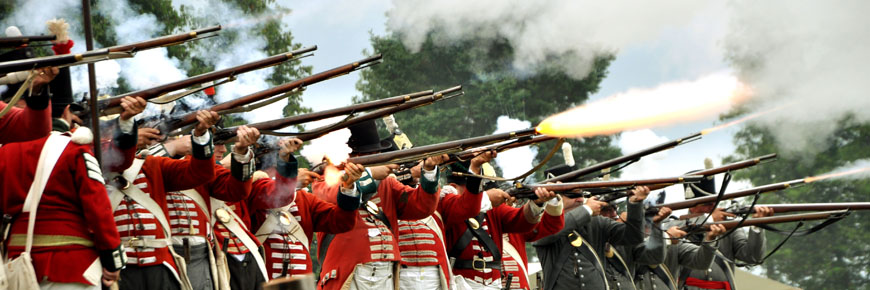
History
Fort St. Joseph National Historic Site
Why Fort St. Joseph?
When the Treaty of Paris was signed in 1783, effectively putting an end to the American Revolution, the Michilimackinac (pronounced Mish-il-ih-mack-in-awe) trading post at the entrance to Lake Michigan was awarded to the United States. However, the British kept control of the site until 1796, when it was finally ceded to the Americans. The British then had to build a new fort. St. Joseph Island was chosen as the site because of its proximity to Fort Mackinac (pronounced Mack-in-awe) and to the busiest navigation routes. From a military standpoint, Fort St. Joseph played a defensive role - its primary purpose being to protect the fur trade from the Americans. Staff from the British Indian Department were present at the fort to maintain good relations with the local Indigenous population. Construction began on the blockhouse in 1797 and on the other important elements of the fort (palisade, guardhouse, kitchen and storehouse) in the following year. The powder magazine, bakehouse and chimney and blacksmith shop were built later.
War of 1812
As early as 1807, relations between the Americans and the British were growing strained. There were a number of reasons for this, mostly related to the foreign and trade policies of these two countries. Regional issues were also involved, notably control over the Great Lakes and the fur trade routes. Fort St. Joseph became a rallying point as soon as the United States declared war on Great Britain in June 1812. The garrison commander, Captain Charles Roberts, knew that his fort was vulnerable and decided that his best defence was a good offence. On July 17, leading a force of about 40 regular soldiers, 150 Canadians and 300 Indigenous people, Roberts captured the American fort on Mackinac Island, thereby serving notice to the American garrison that war had been officially declared. The British garrison and traders abandoned Fort St. Joseph and moved into the American fort. Later, in 1814, an American expedition burned the abandoned Fort St. Joseph to the ground.
After the War
Under the peace treaty signed in December 1814, all territories conquered by the two participants in the war were returned to their previous owners. The British army returned Fort Mackinac to the Americans, but decided not to rebuild Fort St. Joseph. They subsequently established a post on Drummond Island. Buildings that were not burned were moved across the ice to the new site.
In the 1920s, the Sault Ste. Marie Historical Society became interested in the ruins of the fort and some work was carried out to stabilize the ruins. After the Second World War, a road was opened to the site, which was developed into a picnic ground. Because written documents are sometimes insufficient (or can even be misleading), archaeologists play a significant role in piecing together the story of sites such as Fort St. Joseph. Their research requires patience and care because clues are destroyed as work progresses; once a layer of soil has been removed, it cannot be put back.
During the summers of 1963 and 1964, teams from the University of Toronto conducted systematic preliminary research. No further work was carried out until 1974, when Parks Canada launched a three-year archaeological program. From this research work (on-site excavations and the study of archives), 21 buildings with excavated cellars and 21 above ground buildings were identified.
Related links
- Date modified :